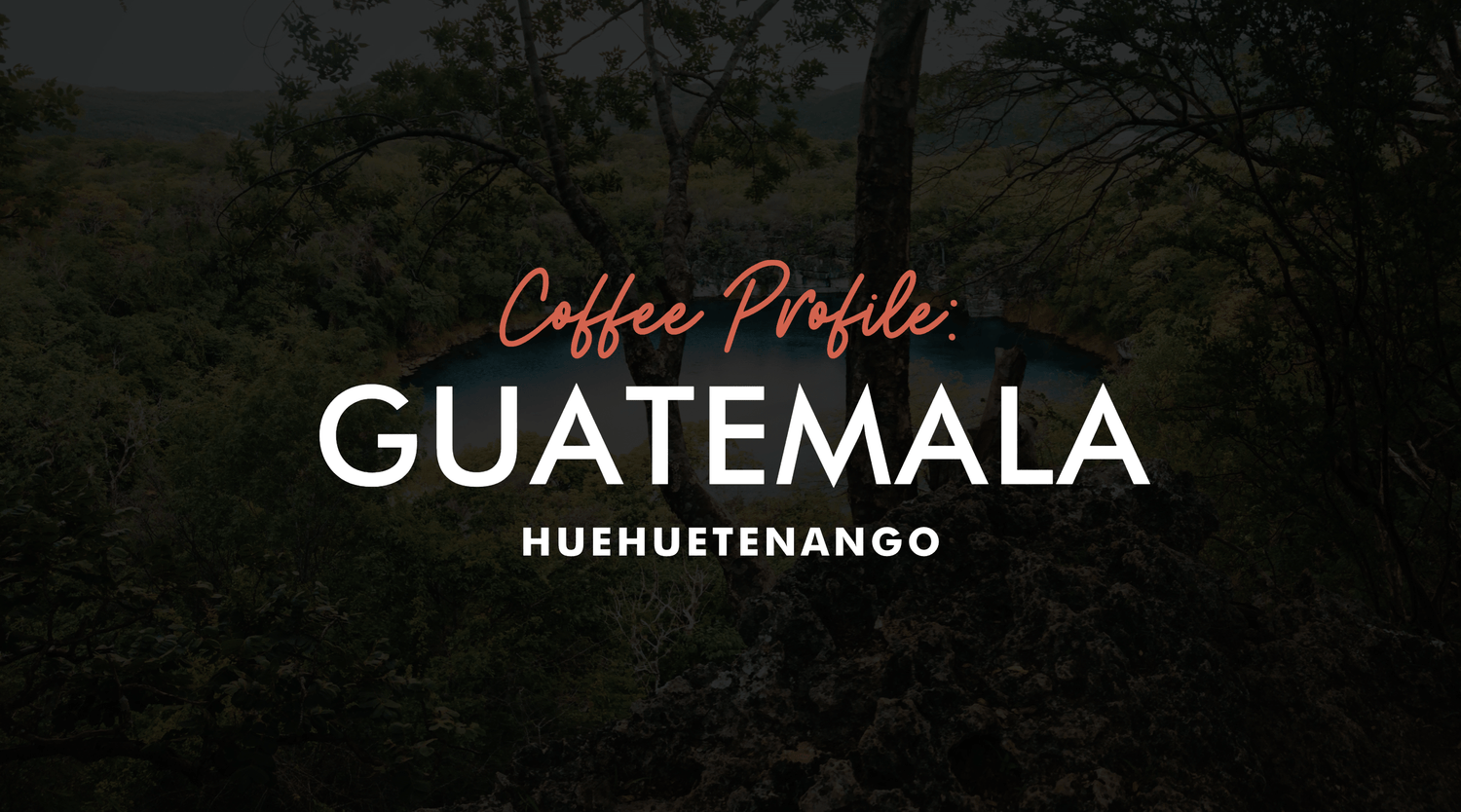Huehuetenango coffee is as amazing as it sounds (Pronounced “Whey-Whey-Tenungo” if you can correctly pronounce it – which is difficult for just about any non-native speaker).
The region is located in the highlands western Guatemala and is one of the three non-volcanic areas. What this region does have, however, is the highest mountain ranges in all of Central America and limestone soil that is known for relatively high pH levels.
What does a high pH soil mean for your cup? Well, it is known to affect the acidity in your coffee. Typically acidity has negative connotations, but the acidity you taste in your espresso is actually quite desirable and often highly prized.
A high altitude also contributes to the acidity, and this is where Huehuetenango coffee has a unique advantage. Thermal hot masses of air coming down from the Gulf of Mexico mix with the cooler air that descends from the Cuchumatanes mountain range (Sierra de Los Cuchumatanes). This mixture of air creates a perfect microclimate right at the top of the mountains and allows coffee to grow at high altitudes without being affected by frost damage. The coffee can grow at altitudes of ~2000masl, and because of this unique positioning, the plants grow much more slowly. Slow development of the trees allows more complex sugars to develop within the cherries and add to the overall fantastic flavour.

Mountains with microclimate allow the coffee trees to grow more slowly and develop complex sugars
Coffee that grows at this altitude, or above 1200m, is known as Strictly High Grown (SHG) or Strictly Hard Beans (SHB) and is also desirable in coffee. The slower cherry development results in more nutrients delivered in the coffee, along with healthy organic compounds.
But growing coffee at this altitude isn’t without its fair share of challenges. The mere remoteness of these farms means that farmers can’t haul their harvests to the nearest mill like other regions. Each farmer is required to process the coffee themselves before transporting it down to the cities. The farmers typically own a couple of hectares for growing and then wash and dry the clean the coffee cherries in the sun on small patios beside their own houses. Once the seeds are dry enough, the farmers will take the coffee down the mountains to the nearest city, the City of Huehuetenango at the base of the mountains.

Being such a unique climate offers some of the most complex and juicy coffees and is considered one of the highest quality producers of coffee in Guatemala. Another coffee region, Antigua, is the most commonly known coffee region in Guatemala and has a much larger volume of export. However, with the flavours produced from the Huehuetenango region, Huehuetenango is becoming more and more popular every harvest.
We are lucky enough to source this coffee from time to time and if you’re reading this blog in the month of August/September 2019 then you may just be in time to snare a sample. Simply, head on over to our Guatemala Coffee page and grab yourself 500g or a Kilo.
Grown between 1400 – 1700 metres on a microlot farm in the Huehuetenango region, these Caturra and Bourbon varietal beans have delicious cherry and floral tasting notes due to the rich, volcanic soil in the area. They have a well-balanced body, with medium-high acidity that gives a sweet, clean finish. A delight to drink.



